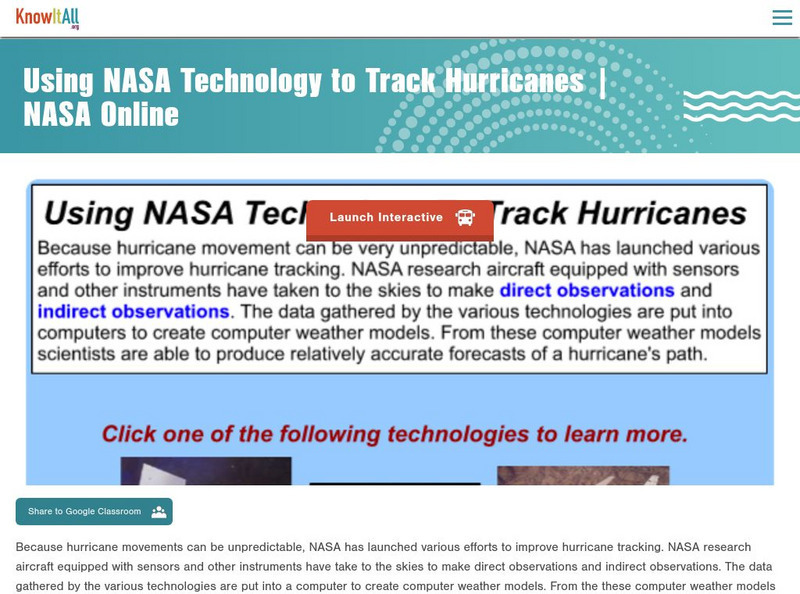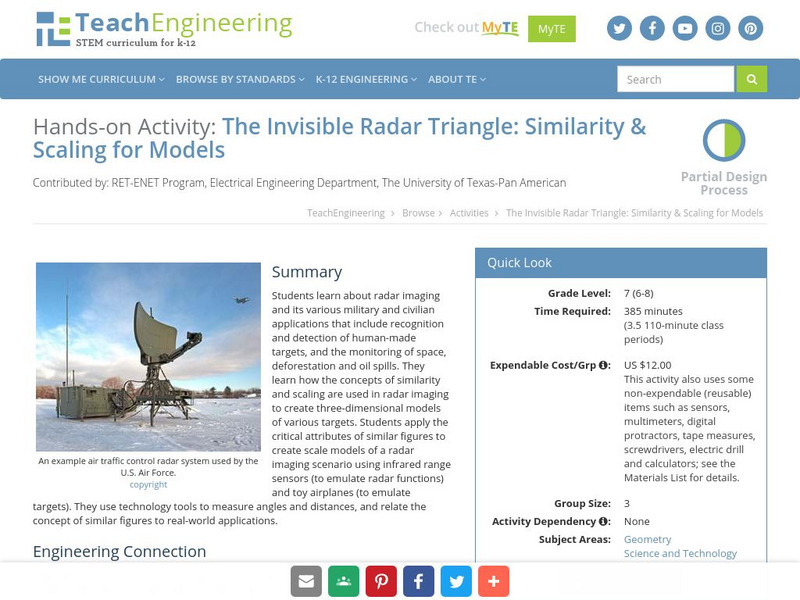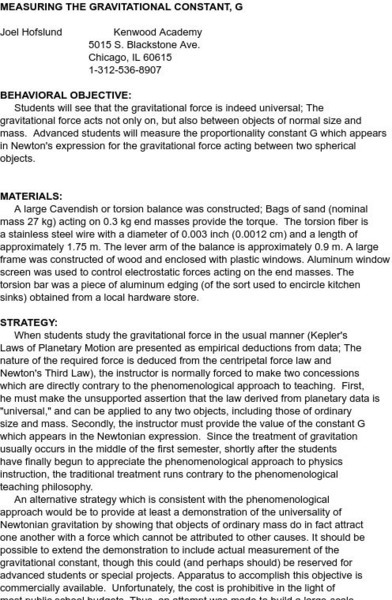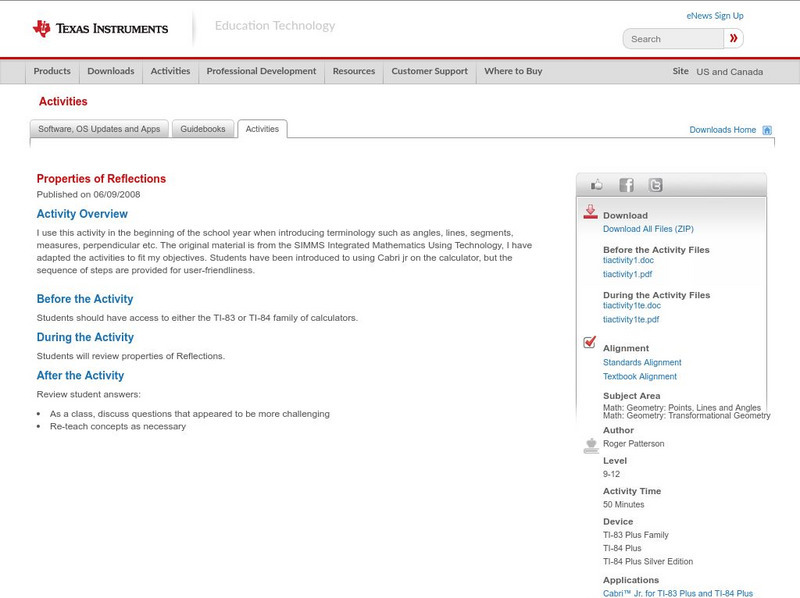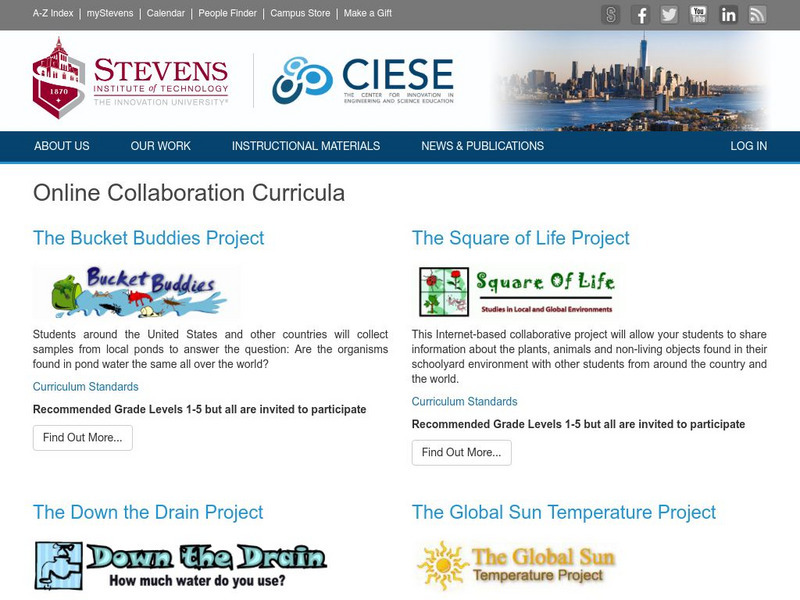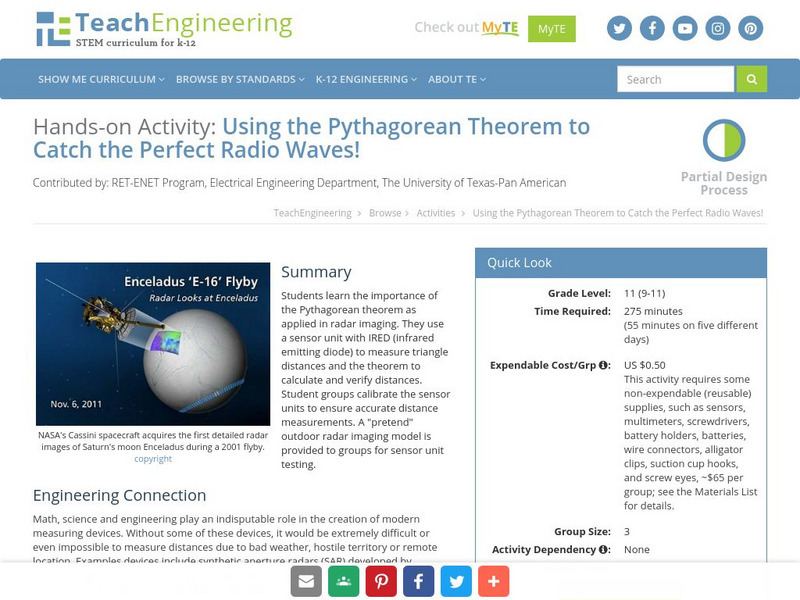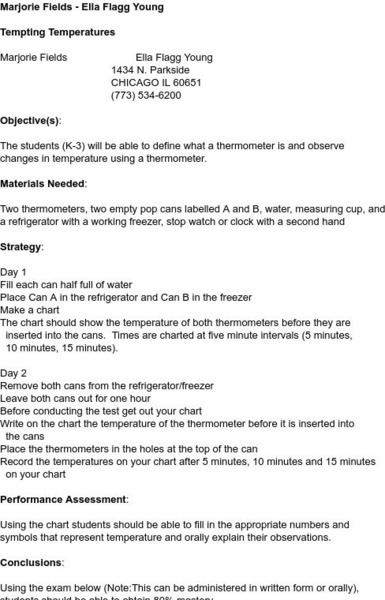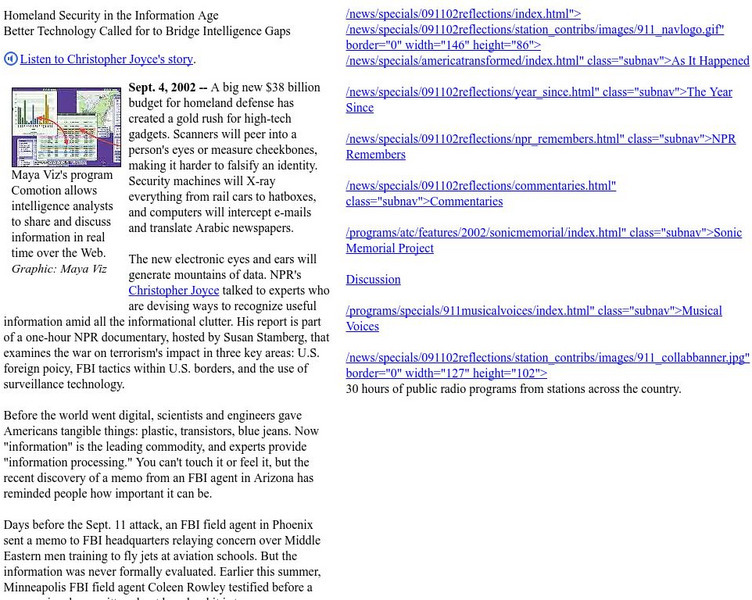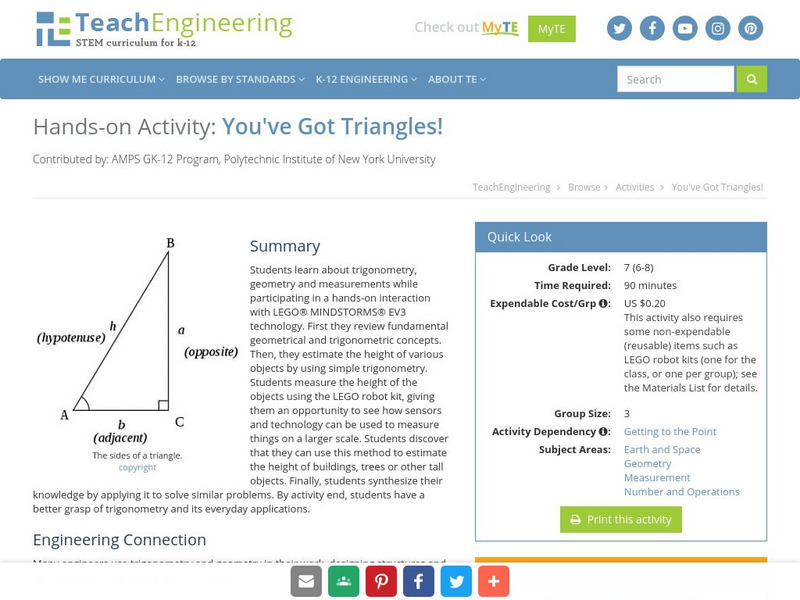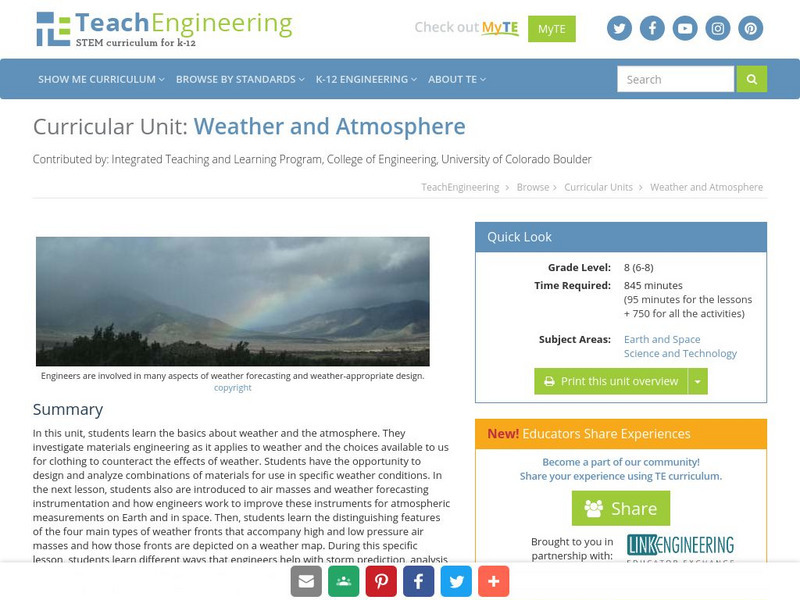Canada Science and Technology Museum
Canada Science and Technology Museum: Background Information for Energy
Energy! What do you know about it? Use this terrific site to find out everything about it through a series of Q&As. Educators will find useful lesson plans at the related Teacher's site.
Other
Sun Associates: 3 Steps for Technology Evaluation [Pdf]
This pdf document outlines the three steps and outcomes of a technology evalution project. Although this process is designed to be facilitated by an outside agency, districts could use this information to design their own evaluation...
South Carolina Educational Television
Know It All Media: Tracking Hurricane Technology
Find out how scientists have improved hurricane tracking technology through new aircraft and advanced instruments.
TeachEngineering
Teach Engineering: The Invisible Radar Triangle
Students learn about radar imaging and its various military and civilian applications that include recognition and detection of human-made targets, and the monitoring of space, deforestation, and oil spills. They use technology tools to...
Utah Education Network
Uen: Design Your Own Bedroom
Many students dream of designing their ideal bedroom. In this exercise, students will be required to limit their designs by size (as a specific volume) and price (a specific amount). They must design the floor plan, including furniture...
Science and Mathematics Initiative for Learning Enhancement (SMILE)
Smile: Measuring the Gravitational Constant, G
A demonstration/lab idea for determining the numerical value of the universal gravitation constant using a torsion balance.
Other
Specialist Schools and Academies Trust: Learn Ar: Maths: 3 D Objects
A learning resource that incorporates augmented reality (AR), using a camera, where students explore the volume and surface area of 3-D figures. The home page for this site has a PDF resource that explains how AR works and provides...
Texas Instruments
Texas Instruments: Properties of Reflections
I use this activity in the beginning of the school year when introducing terminology such as angles, lines, segments, measures, perpendicular etc. The original material is from the SIMMS Integrated Mathematics using Technology, I have...
Center for Innovation in Engineering and Science Education, Stevens Institute of Technology
Ciese: Collaborative Projects
Using a variety of science topics, these projects link your class with classes around the world in data collection and analysis. There are projects recommended for all grade levels. Begin dates and end dates are listed to help in...
PBS
Pbs Teachers: Real Scientists: Bioengineer
Explore how bioengineers use technology and knowledge about the human body to design office, wheelchair and automotive seats.
TeachEngineering
Teach Engineering: Catching the Perfect Sar Waves!
Students learn the importance of the Pythagorean theorem as applied in radar imaging. They use a sensor unit with IRED (infrared emitting diode) to measure triangle distances and the Pythagorean theorem to calculate and verify distances....
Science and Mathematics Initiative for Learning Enhancement (SMILE)
Smile: Tempting Temperatures
In this lesson plan students learn how to use a thermometer and compare changes in temperature using water in the fridge and water in the freezer. Helps students create charts to analyze data.
Curated OER
Educational Technology Clearinghouse: Maps Etc: Drawing Asia, 1872
A chart from 1872 illustrating instructions for drawing Asia. "General instructions for drawing the continents. Make a scale by marking on a slip of paper or pasteboard the measures 1,2,3, etc., as on the sides of this map. Every measure...
Curated OER
Educational Technology Clearinghouse: Clip Art Etc: Cyathus
A Greek and Roman liquid measure, containing one-twelfth of the sextarius, or .0825 of a pint English. The form of the cyathus used at banquets was that of a small ladle, by means of which the wine was conveyed into the drinking-cups...
Curated OER
Educational Technology Clearinghouse: Clip Art Etc: Sphinx
Sphinx is a Greek word signifying 'strangler,' applied to certain symbolical forms of Egyptian origin, having the body of a lion, a human or an animal head, and two wings. Various other combinations of animal forms have been called by...
NPR: National Public Radio
Npr: Homeland Security in the Information Age
This site provides the story detailing new attempts at sorting and using the large quantities of data generated by security measures in the information age. (4 September 2002)
TeachEngineering
Teach Engineering: You've Got Triangles!
Students learn about trigonometry, geometry and measurements while participating in a hands-on interaction with LEGO MINDSTORMS NXT technology. First they review fundamental geometrical and trigonometric concepts. Then, they estimate the...
TeachEngineering
Teach Engineering: Weather and Atmosphere
In this unit, students learn the basics about weather and the atmosphere. They investigate materials engineering as it applies to weather and the choices available to us for clothing to counteract the effects of weather. Students have...
Alabama Learning Exchange
Alex: The Clock Tower
This project resulted from the collaboration of a computer aided drafting teacher (pre-engineering), Chris Bond, and a math teacher, Lee Cable, (Hewitt-Trussville High School) to provide higher math expectations in CT and real life...
Texas Instruments
Texas Instruments: Numb3 Rs: Clearing All Obstacles
Based off of the hit television show NUMB3RS, this lesson has students modeling a mock food fight using projectile motion. This lesson is very technology-intensive, and a CBR2 is used to measure the velocity of an object so that it's...
PBS
Pbs Teachers: Scientific American: 21st Century Medicine: Image Guided Surgery
Investigate the science and medical diagnostic uses of magnetic resonance imaging (MRI) technology. Perform experiments to observe how magnetic properties can be induced, and measure the force of temporary magnets.

